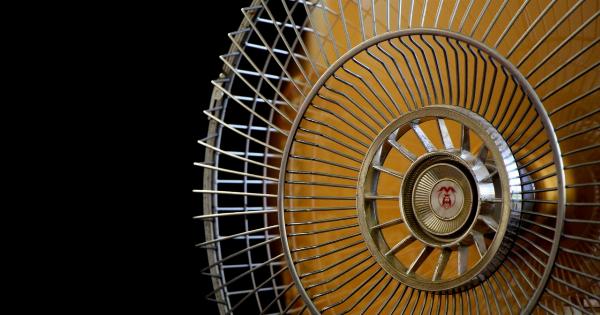Strawberries are delicious and versatile fruits that can be enjoyed in various dishes, from salads and desserts to smoothies and jams.
While they are typically grown outdoors in gardens or farms, advancements in technology have made it possible to grow strawberries anywhere, anytime using LED lights. This article will explore the benefits of using LED lights for strawberry cultivation and provide a comprehensive guide on how to grow strawberries successfully, even in limited spaces.
Benefits of Using LED Lights for Strawberry Cultivation
1. Year-Round Cultivation: LED lights enable growers to simulate different seasons, allowing strawberries to be grown throughout the year. This is especially beneficial in regions with extreme climates or limited growing seasons.
2. Increased Yield: LED lights provide optimal light spectrums that promote plant growth and improve fruit production.
By tuning the light wavelengths to match the specific needs of strawberries, growers can achieve higher yields compared to traditional cultivation methods.
3. Energy Efficiency: LED lights are renowned for their energy-saving capabilities. They consume less electricity compared to conventional lighting systems, making them cost-effective and environmentally friendly.
4. Customizable Light Spectrums: LED lights can be easily adjusted to provide the ideal light intensity and spectrum required at each stage of strawberry growth.
This level of control allows growers to optimize plant development and maximize fruit quality.
5. Space Optimization: LED lights can be installed vertically, making them perfect for small spaces or indoor cultivation.
This vertical farming technique allows growers to maximize their strawberry production in tight urban settings or places with limited square footage.
Choosing the Right LED Lights for Growing Strawberries
When it comes to selecting LED lights for growing strawberries, certain factors should be considered:.
1. Light Spectrum
Strawberries require a blend of red and blue light spectrums for optimal growth. Look for LED lights specifically designed for horticulture that provide a balanced combination of red and blue wavelengths.
2. Light Intensity
The intensity of LED lights affects strawberry plant development. Choose lights with adjustable intensity levels to cater to different growth stages, from seedling to fruit-bearing.
3. Energy Efficiency
Key metrics to assess energy efficiency include the light output per watt and the overall power consumption. Opt for LED lights with high energy efficiency ratings to reduce electricity costs.
4. Heat Management
LED lights produce less heat compared to traditional lighting systems. However, it’s essential to choose lights equipped with proper heat sinks or cooling mechanisms to ensure the strawberry plants do not overheat.
Setting Up Strawberry Cultivation with LED Lights
Follow these steps to establish a successful strawberry cultivation system using LED lights:.
1. Prepare the Growing Area
Clean and sanitize the chosen cultivation area, whether it’s a greenhouse, indoor space, or containers for vertical farming. Ensure proper ventilation and temperature control for optimal strawberry growth.
2. Select Suitable Strawberry Varieties
Choose strawberry varieties that are well-suited for indoor or controlled environments. Some popular options include Everbearing, Alpine, and Ozark Beauty. Consider factors such as taste, size, and growth habits while making your selection.
3. Acquire Necessary Equipment
Invest in LED grow lights, plant containers or vertical farming systems, trellis or support structures, potting soil, and appropriate fertilizers. Make sure to acquire high-quality equipment to ensure successful cultivation.
4. Set Up LED Grow Lights
Install the LED grow lights according to the manufacturer’s instructions. Ensure the lights are positioned at the proper height above the plants to avoid light burn or inadequate light coverage.
5. Planting the Strawberries
Fill the chosen plant containers with potting soil and plant the strawberry seedlings. Follow the instructions specific to the strawberry variety regarding spacing and depth. Water the plants thoroughly after planting.
6. Manage Light and Watering Schedule
Strawberry plants require a consistent light duration and intensity to simulate natural conditions. Generally, 12-16 hours of light per day is recommended. Additionally, ensure the plants receive proper watering to avoid drought stress or overwatering.
7. Monitor and Maintain
Regularly monitor the strawberry plants for any signs of pests, diseases, or nutrient deficiencies. Adjust the LED light intensity and spectrum as needed for different growth stages.
Prune the plants as necessary to promote air circulation and prevent overcrowding.
8. Pollination
While strawberries can self-pollinate, gently shaking the plants or using a small brush to transfer pollen can enhance fruit development.
This step is particularly important if growing strawberries indoors or in enclosed spaces where the natural pollinators may not reach the plants.
Harvesting and Enjoying Your Strawberries
With proper care and cultivation, your strawberries should be ready for harvest within a few months. Harvest the ripe strawberries by gently twisting and pulling them from the plants.
Be sure to savor the flavorful fruits and explore creative recipes to fully enjoy your homegrown strawberries.
Conclusion
LED lights have revolutionized the way strawberries are cultivated, allowing growers to enjoy this delightful fruit all year round, regardless of their location or space constraints.
By choosing the right LED lights, setting up the cultivation area properly, and following essential steps, strawberry enthusiasts can successfully grow their favorite fruit from the comfort of their own home. Embrace the technology of LED lights and embark on a journey of delightful strawberry cultivation!.






























